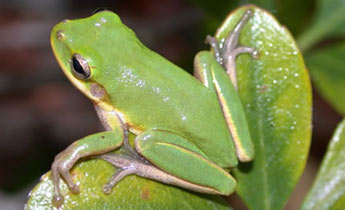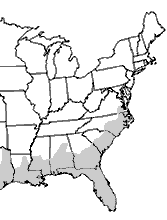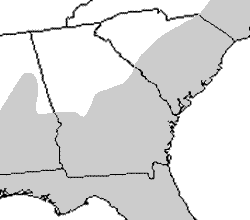Squirrel Treefrog (Hyla squirella)
Squirrel Treefrog (Hyla squirella)



Squirrel Treefrog Call
Description: A small to medium-sized treefrog (2.2–4.1 cm; 1–1.5 in) with highly variable coloration. Individuals may shift from green to yellowish or brown, with plain or spotted patterns. Some show bars between the eyes or faint, broken lateral stripes. Because of this variability, identification often relies on distinguishing it from similar species: Green Treefrogs (D. cinereus) usually show a solid white lateral stripe; Barking Treefrogs (D. gratiosus) are larger with granular skin; Gray and Cope’s Treefrogs (D. versicolor / D. chrysoscelis) and Pine Woods Treefrogs (D. femoralis) have bright yellow or orange flash coloration on the thighs.
Range and Habitat: Common throughout the Southeast Coastal Plain, including South Carolina and Georgia. Occupies diverse moist habitats such as marshes, swamps, lake and stream margins, gardens, shrubbery, woodlands, and rotting logs. Frequently found around human habitation, particularly in gardens and at porch lights.
Habits: Nocturnal but active during the day in rainy conditions. Breeding occurs from March to October, with peak activity during summer storms. Females deposit around 1,000 eggs in shallow pools. Tadpoles typically metamorphose within ~45 days. Adults forage opportunistically for insects, often congregating around artificial lights to feed.
Call: Two common call types:
- Rain call: A rapid “chattering” that resembles a squirrel, often given during and after storms.
- Breeding call: A nasal, duck-like quack.
Conservation Status: Abundant throughout the Southeast; not protected.



